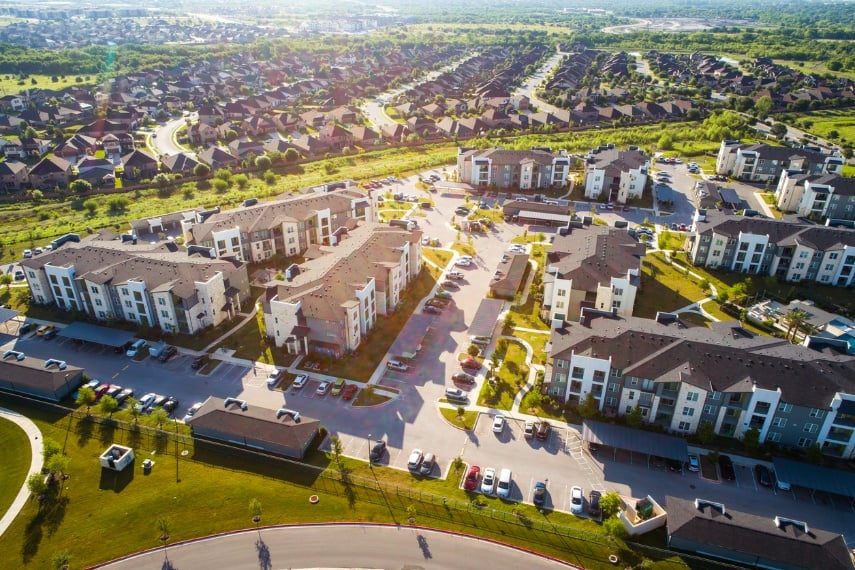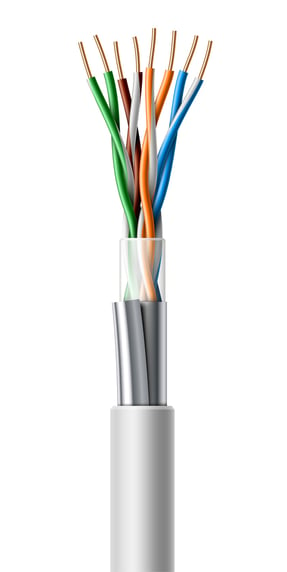Multi-Dwelling Unit | MDU | Consulting
4 Best Solutions to Update Multi-Dwelling Unit (MDU) Infrastructure

Bill Halvorsen, a U.S. Marine Corps Veteran, has worked in the telecommunications industry for 32 years. Starting his career as a radio repairman, electronics technician, and data network specialist in the Marines, Bill was hired by Cisco Systems to deliver services to service providers around the globe. After 21 years at Cisco, Halvorsen was hired by CCI Systems to specialize in Broadband Access Architectures as a Solution Architect.
Existing network infrastructure is the #1 problem service providers face when trying to serve multi-dwellings units (MDUs).
Oftentimes, MDUs are bypassed because they present an infrastructural inconvenience. Plus, it is common for the network components to be outdated.
Knowing full-well an MDU will be difficult from the onset, there is a certainty that more obstacles will be encountered along the way.
So, in the short-term, it is easy for service providers (SPs) to take the path of least resistance, which will be more profitable, as they avoid hurdles and slowdowns.
Yet, in the long-term, MDUs will exceed the limitations of a residential neighborhood and exceed earnings by targeting commercial entities with access to clusters of subscribers (i.e. end users).

But how do you—as the service provider—circle back and capture the interest of a property owner who may be reluctant to update network infrastructure? And what do those options look like?
As a solution provider, CCI Systems gives an operator a consultative assessment on whether an MDU is doable or economical, being preemptive in evaluating any risks for companies of all sizes.
During the decision-making process, service providers come to CCI’s team with multiple MDUs they’re considering within a regional footprint. Our experts provide the insights and analyses essential for the next steps.
In this article, you will discover the 4 best solutions for updating existing network infrastructure within multi-dwelling units and understand how to approach those options.
1. Fiber to DOCSIS Conversion Technology
Updating the existing coaxial cables (coax) is the first go-to solution in an infrastructure update.
If your company has a cable TV operator you're competing against, you can go the fiber to the premises (FTTP) route and use the existing coax in the MDU to service the high-speed data.
Let’s say the coax in the street was placed by a Tier 1 cable provider, but the property owner prefers a satellite service instead. In the case of MDUs, the decision always rests on the preference of the property owner.
Per the want of the property owner, an overbuilder or a fiber to the home (FTTH) provider can take FTTP and use a black box able to support multiple mobile vendors, allowing them to bypass the local cable lines.
By bypassing the cable, the solution provider opens the door to integrating a cable modem service, while the MDU continues using their preferred satellite service.
This solution is very scalable, and it can provide high-speed data to dozens of units—being ideal for apartments and hospitality.

2. G.fast High-Speed Solution
G.fast is simply leveraging the existing twisted pair access, which is common in most dwellings in the U.S, and the North American market.
It is short reach, high-speed, and similar to DSL (digital subscriber line) and VDSL (very high-speed digital subscriber line) taking fiber to the premise and using twisted pair cabling.
Twisted pair cabling is a type of wiring where two conductors of a single circuit are twisted together to improve electromagnetic compatibility.
Twisted pair technology (like G.fast) extends from the edge of the MDU and into the unit itself. An MDU unit is connected to fiber on the outside of the building with multiple twisted pairs going into the house wiring.
Typically, the MDU solution is a conversion, or a demarcation point (demarc), where it may be FTTP technology with a demarc that goes G.fast from there on. A demarc is the point at which a customer’s private network begins and the public switched telephone network ends.
The last thing to know is G.fast DSL is considered a long-haul technology, where it can go back to a central office like cable fiber does.
3. Managed WIFI for Tiered Access
An operator can position a high-power access point in a central location, or from multiple access points, to serve an MDU and offer a managed WIFI solution.
This is not a residential solution.
Managed WIFI is exclusively a commercial offering to serve multiple end users with different tiers of access. It’s common to see an outdoor unit with WIFI that can reach multiple units.
If it's an apartment complex, think access points down the hall able to cover more than one unit. It can be a little bit trickier and there are a few different approaches.
Small operators may not have the skill or the expertise of how to tackle managed WIFI, so some solution providers have access to support service teams who can take care of this solution as an extension of the service provider.
Consulting with the right people who know the right technologies will allow for the operationalization of managed WIFI and make it a sellable commodity.
4. Ribbon Fiber on a Budget
Ribbon fiber is a very economical, affordable, quick, and easy solution. It also provides a temporary fix before a larger remodel and upgrade if you need to time the market. A Band-Aid if you will.
Think of a string with an adhesive backing where the engineer installs the fiber along the baseboard or floorboard of an apartment or condominium leading to an indoor fiber optic box.
FTTP is directed to each unit and ribbon fiber allows for a split in each unit. Technicians do not have to go into the walls, and they’re not touching the spine, or the backbone, of the building infrastructure.
While not the best long-term solution, ribbon fiber is a great option to produce higher speeds for lower costs during a pinch or between a renovation with a more permanent solution.
Operationalize Your Plan to Approach MDUs
With a major influx of government funding flowing into the telecommunications industry, many operators have never approached a multi-dwelling unit, but now, they have the opportunity and resources to do so.
Despite the sound finances, some operators and providers do not have the experience to move into the MDU space and take on a new challenge.
If an operator needs assistance or guidance on how to manage an MDU, most solution providers can create a plan with processes and procedures to grow into a profitable venture.
CCI’s knowledge and best practices have been strengthened by working directly with operators who need the best advice from the best engineers.
CCI provides information and consulting services to SPs, giving advice and assistance with a hands-on approach. Further, CCI’s support services team are managed services veterans within the hospitality industry.
If you’re a service provider looking to capitalize on the MDU market, contact one of our experts to set up an assessment call.

